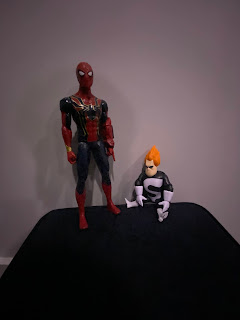.08 - Using Composition

Today I learned about composition in class we watched a clip of a movie and put our knowledge of composition and camera angles and shots to the test. Framing: Role of any rule composition is to draw the eye into a photograph. Its when elements of the scene are used as a frame within the frame of the picture. Rule of Thirds: Is when you divide your image by 2 horizontal lines and 2 vertical lines. You then position the important elements of the image along the lines. When you align a subject within the points of the grid it creates tension, energy and tension. Depth of Field: The distance between the closest and farthest objects in a picture that appears sharp. Deep Focus: Includes foreground, middle-ground, and extreme background objects. This shot keeps both close and background objects in focus. Shallow Focus: Has a small depth of field. one subject is in focus while the rest are not Focus Pull: Where you change the focus during the shot. Adjusting focus from one subject ...



